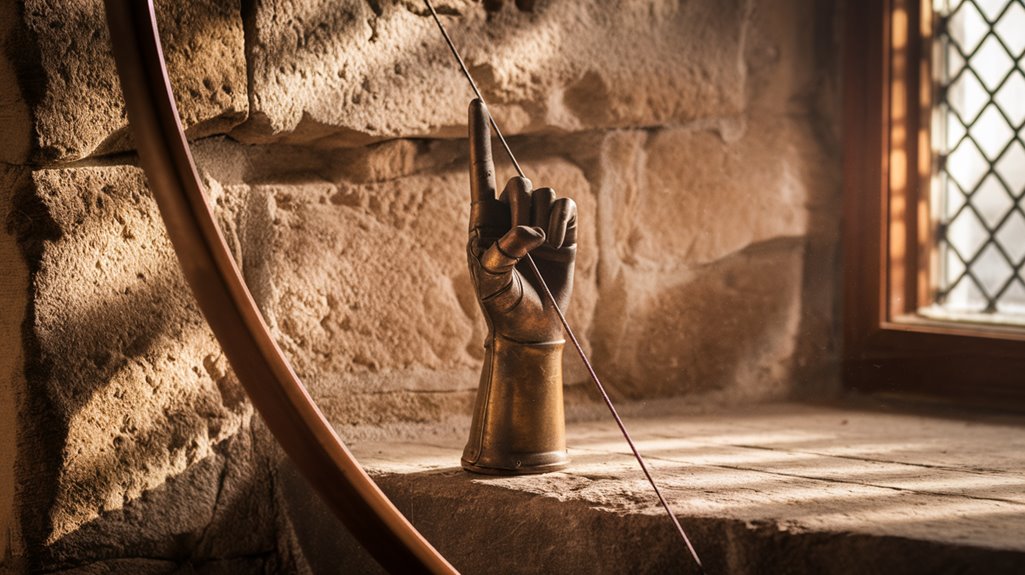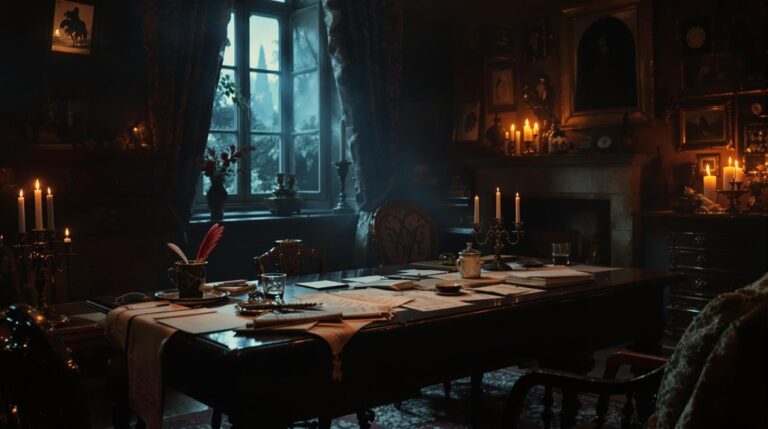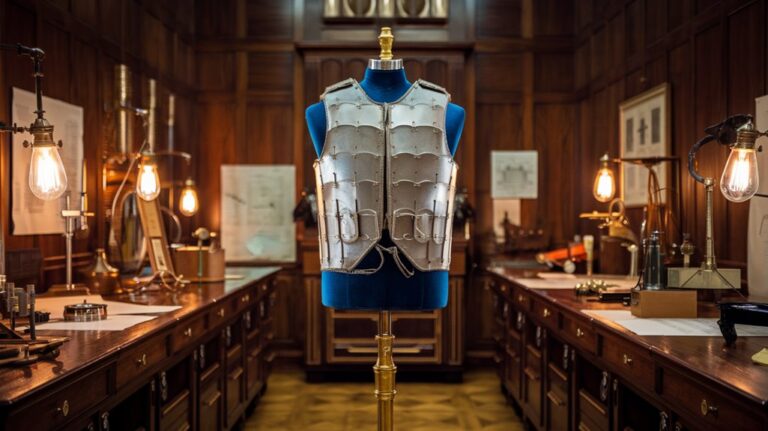The Surprising Roots of the V-Sign: More Than a Victory Symbol
You might be surprised to learn that the V-sign wasn't Churchill's invention at all, but rather the brainchild of a Belgian radio host broadcasting from London's BBC studios. When Victor De Laveleye introduced this simple gesture in 1941, he couldn't have known it would become one of history's most powerful symbols of resistance. It's a story that weaves together unlikely elements: classical music, morse code, and underground movements that turned this modest hand signal into a weapon against oppression.
The Birth of a Wartime Symbol: Victor De Laveleye's Vision

While many associate the V-sign with Winston Churchill, its origins actually trace back to Victor De Laveleye, a Belgian politician in exile who launched the powerful symbol during World War II.
De Laveleye's influence began on January 14, 1941, when he broadcast a simple yet ingenious idea through BBC's Radio Belgique. As a former Minister of Justice turned radio announcer, he called on his fellow Belgians to use the V-sign as a tool of resistance against Nazi occupation. The BBC further amplified the campaign by broadcasting the Morse code pattern that matched Beethoven's Fifth Symphony.
The letter's symbolic psychology was masterful – V represented "victoire" in French, "vrijheid" in Flemish, and "victory" in English, making it universally understood across languages.
You'll appreciate how De Laveleye designed this campaign to make occupying forces feel surrounded by unified resistance, creating a psychological warfare tool that Churchill would later embrace. The underground movement gained such momentum that German forces banned the symbol, inadvertently making it an even more powerful form of protest.
From Radio Waves to Street Walls: The V-Sign's Rapid Spread
After De Laveleye's radio broadcast ignited the spark, the V-sign rapidly evolved from a simple radio concept into a powerful visual rebellion across occupied Europe.
The media influence began in earnest when the BBC amplified the symbol's reach in 1941, with Winston Churchill famously adopting it as his signature gesture. The symbol's transmission was particularly effective since radio waves could pass through obstacles, allowing the message to reach even heavily restricted areas.
You'll find that its cultural adaptation happened swiftly, as resistance movements painted V's on walls across occupied territories, from Norway's streets to Jersey's Royal Square. The symbol's power grew through American propaganda posters and widespread press coverage.
What's fascinating is how the gesture transcended its wartime origins. You can trace its journey from resistance symbol to a versatile cultural icon, appearing in contexts as diverse as anti-war protests, political campaigns, and pop culture, where even The Beatles' Ringo Starr embraced it. In Japan, the gesture transformed into a cheerful pīsu sain photo pose, especially among young people.
The Hidden Musical Connection: Beethoven's Fifth and Morse Code
Hidden beneath the iconic opening notes of Beethoven's Fifth Symphony lies an extraordinary coincidence that would prove historically significant during World War II. The symphony's famous four-note motif perfectly matches the Morse Code signal for the letter "V" – three short pulses followed by one long one.
This Musical Influence would become a powerful weapon in the Allied arsenal, as the BBC cleverly incorporated these notes into their daily broadcasts. Victor de Laveleye first suggested using this powerful symbol in 1941. The piece's historical significance was already well-established, having been first performed in Vienna in 1808.
You'll appreciate how this connection created three remarkable outcomes:
- The French Resistance adopted the symphony as a symbol of solidarity
- The BBC used the opening notes to boost morale across occupied Europe
- A German composer's work ironically became an anti-Nazi rallying cry
The symphony's connection to the Morse Code "V" transformed Beethoven's masterpiece into an unexpected tool of resistance and hope.
Churchill's Powerful Endorsement and Global Impact
Through a masterful display of political instinct, Winston Churchill transformed the V-sign into a powerful weapon of psychological warfare when he embraced it in July 1941.
Churchill's charisma turned what began as a Belgian initiative into a global phenomenon that would unite millions against Nazi oppression. The idea originated when Victor de Laveleye first proposed using the V symbol as a unifying sign of resistance. The symbol gained such momentum that resisters carved Vs into church pews and other public spaces as acts of defiance.
You mightn't realize how deeply this simple gesture resonated across occupied Europe. As Churchill flashed the V-sign during public appearances and international visits, it became more than just wartime propaganda – it evolved into a universal symbol of hope and resistance.
The campaign's success was amplified through BBC broadcasts, government-issued materials, and even the strategic use of Beethoven's Fifth Symphony.
Despite German attempts to co-opt the symbol, Churchill's powerful endorsement guaranteed it remained firmly associated with Allied determination and eventual victory.
Creative Resistance: How People Outwitted Nazi Suppression

While Churchill wielded the V-sign as a symbolic weapon, everyday citizens and artists found their own ingenious ways to defy Nazi oppression.
Through artistic subversion, they transformed various mediums into powerful resistance expressions that challenged the regime's authority. Guards would sometimes stop to watch these acts of creative resistance, proving that shared humanity persisted even in darkness. Nazi control over art was extensive, as demonstrated by the 1937 Munich exhibitions that contrasted approved versus "degenerate" works.
Creative resistors employed three primary tactics:
- Artists like John Heartfield created bold photomontages that mocked Hitler and subverted Nazi imagery.
- Musicians and poets, including Gideon Klein, used their art to maintain humanity in concentration camps, trading performances for survival.
- Groups like the White Rose resistance distributed leaflets and created graffiti to spread dissent.
You'll find that these acts of defiance weren't just about survival—they represented a determined effort to preserve culture, document atrocities, and maintain human dignity in the face of systematic dehumanization.
A Symbol That Transcended Nations and Languages
As Victor de Laveleye introduced the V-sign on BBC radio in 1941, he sparked a movement that would unite diverse cultures under a single, powerful gesture.
What began as a symbol of resistance against Nazi occupation quickly evolved beyond its wartime origins, taking on rich cultural interpretations across the globe. Resistance fighters across Europe adopted it as a symbol of camaraderie and strength during World War II.
You'll find the V-sign's global adaptations remarkable: it transformed from Churchill's victory symbol into a peace sign for American protesters in the 1960s, a rallying cry for Polish Solidarity members, and a campaign emblem in Philippine politics. In Japan, the gesture gained immense popularity after Lynn's influential contribution to making it a cultural phenomenon.
While some groups, like NATO peacekeepers in Bosnia, had to avoid using it to prevent offense, the V-sign's versatility has made it one of the world's most recognized gestures.
It's proof that a simple hand signal can bridge language barriers and unite people across continents.










